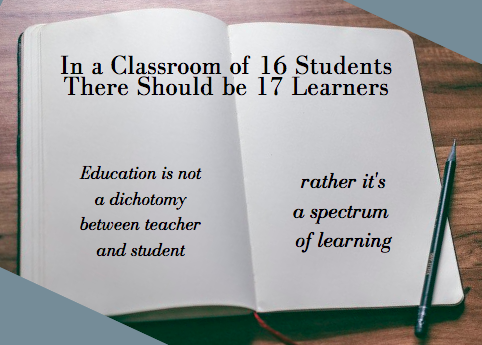I’ve always loved learning. When I was younger, my brothers, who were three and four years older than me, were some of my earliest teachers. They would teach me things like how to play sports, how to laugh when I was sad, how to skateboard, and how to stand up for myself when needed. From there, I would take these skills and teach them to my friends who often didn’t have the benefit of having the “experienced teachers” that I had. In many ways, these skills were the first lessons I taught, and my friends were my first students.
It’s no surprise, then, that I became a teacher. In fact, from a young age, maybe 10 or 11, I always knew that I wanted to teach. This focus allowed me to see an end goal that contextualized much of my learning. On top of that early insight, I also had an innate drive to learn. I enjoyed school and being a student for many reasons; getting involved with sports; participating in clubs; making new friends; but learning was always the part I enjoyed the most.
Fast forward many years later and, as a teacher, I continue to see the value of being a lifelong learner. Of course, it’s important to attend PD to sharpen skill sets or expand practices, and it’s valuable to research pedagogies that might be applied to your pedagogy, but more importantly, we should be learners within our own classrooms.
Education is not a dichotomy between teacher and student, rather it is a spectrum of learning, and teachers, just like students, are a part of that spectrum, not above it. Teachers learn from students as much as students learn from us as teachers. Moreover, just as them, we too need to grow as learners. Being a learner in the classroom means avoiding stagnation by giving students voice and choice within the learning process, and taking risks such as modelling skills for students, and being vulnerable by experimenting with pedagogical practices, and being open to constructive criticism through student feedback.
Often, students, especially within boarding schools, spend more time in class with teachers than they do at home with their own parents. Whether we realize it or not, students look to us to set examples for their own lives. If we aren’t getting outside of our comfort zones and testing our own skills in the classroom, how can we expect that of them? If we haven’t learned anything after a year of being in the same class, how can we expect that of them? If we don’t see the value of being a lifelong longer, how can we expect that of them?
Teachers owe it to their students to push their own boundaries and to model risk, reward, failure, and success. If we let students see us challenge ourselves, then they will be more likely to do the same. Moreover, if we show them that it’s ok to be vulnerable in class, even as the leader of the room, then they are more likely to trust us and let us trust them; they are more likely to learn from us and we are more likely to learn from them. In a classroom of 16 students, there should be 17 learners.
Follow and tweet @Bjeblack to let me know what you’ve learned in the classroom!

